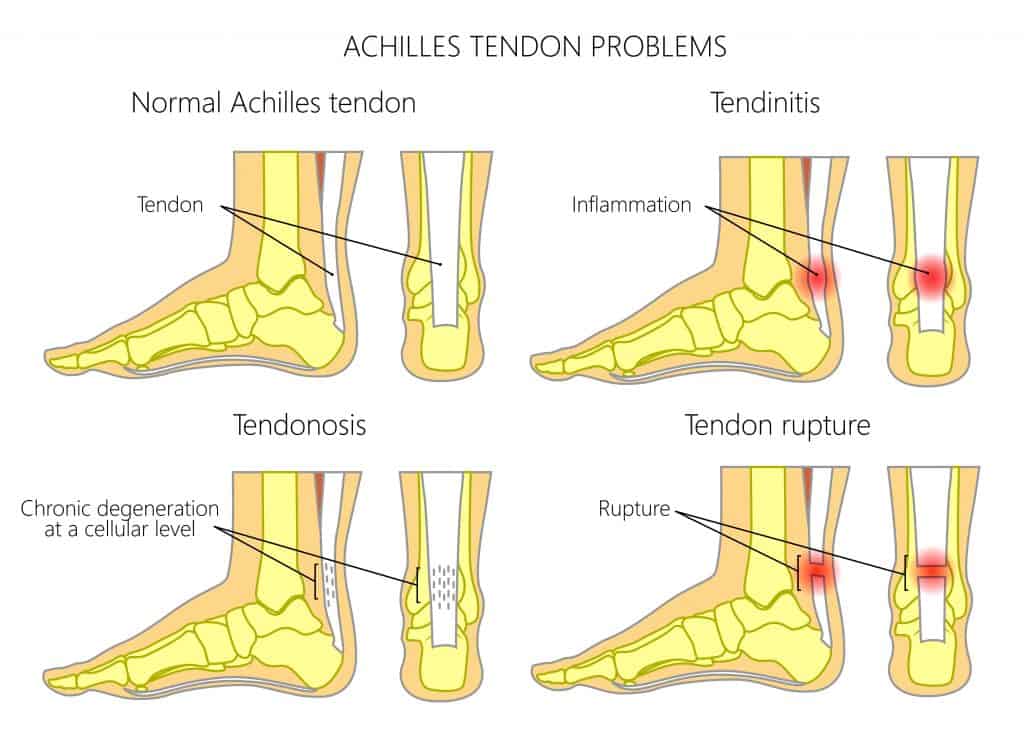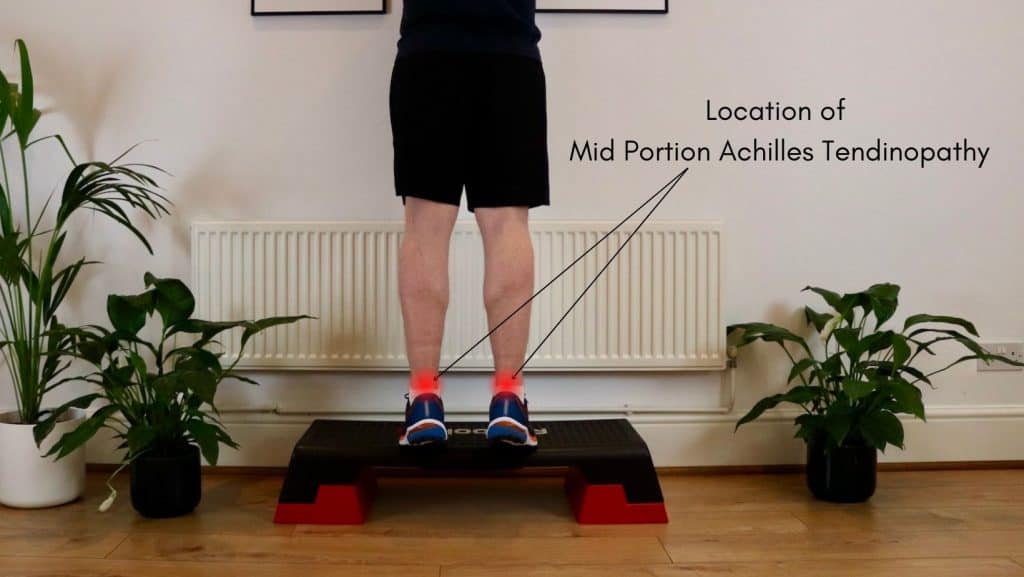Achilles Paratenonitis
Read More >
Achilles Tendinopathy is one of the most common causes of ankle pain. There are two main types of Achilles Tendinopathy: mid-portion, which is in the middle of the Achilles Tendon and Insertional Tendinopathy, where the Achilles Tendon attaches to the heel bone.
Mid-portion Achilles Tendinopathy is the most common type of Achilles tendon pain. This article will explain the condition, its causes and how to treat it.
One of the most common symptoms of mid-portion Achilles Tendinopathy is stiffness first thing in the morning when you get out of bed. We expect this stiffness to ease within 5-10 minutes of walking and in up to 30 minutes in chronic cases. A similar pattern of stiffness may be noticed when walking after a period of sitting.
Symptoms are typically slow and progressive rather than a sudden onset of pain more associated with an Achilles Tendon Tear. Pain is located in the middle of the Achilles Tendon, and patients describe their pain as a dull ache or burning sensation.
It is usual for mid-portion Achilles Tendinopathy to be painful at the start of an exercise and warm-up, and then the pain subsides. However, the pain usually gets worse in the morning after exercise.
In acute episodes of Achilles Tendoninopathy, there may be pain along the length of the tendon, known as Achilles Paratenonitis.

The most common cause of mid-portion Achilles Tendinopathy is a sudden change in exercise levels.
This can be a sudden increase in step count, running volume or speed. Introducing hill running or sprints also places great stress on the Achilles Tendon.
Other factors that can cause mid-portion Achilles Tendinopathy are obesity, poor footwear, type II diabetes and prolonged steroid use.
A clinical assessment is the gold standard for diagnosing mid-portion Achilles Tendinopathy. This will include a clinical interview and Physical Assessment to look at the loading capacity and strength of the Achilles Tendon.
The therapist will perform a squeeze test that involves palpating the tendon 2-6cm above its insertion to the heel bone. If there is pain, then the test is positive.
An MRI or Ultrasound are effective methods of diagnosis and may rule out conditions like an Achilles tendon tear or a Plantaris Rupture.

Physical Therapy is the best form of treatment for mid-portion Achilles Tendinopathy. This will consist of strength training for the Achilles Tendon to increase the capacity of the Tendon for absorbing load.
When someone has mid-portion Achilles Tendinopathy, there is a change in the structure of some of the fibres within the tendon, which reduces their loading capability. For this reason, resting does not heal a Mid-Portion of Achilles Tendinopathy, as once the affected fibres have changed in structure, they cannot return to their previous state with rest alone.
Strength training helps to grow more healthy fibres and can improve the capacity of some of the pathological fibres. It takes significantly longer to grow new tendon fibres than muscle hypertrophy, so rehabilitation for a mid-portion of Achilles Tendinopathy takes up to 12 weeks.
A rehabilitation program is designed to overload the tendon and should be carried out 3 times a week. This allows the tendon time to recover between sessions. It is okay to have pain in your Achilles Tendon while you perform the exercises, but this should subside within a couple of hours of the exercises. If the pain worsens the following morning, this is a sign of an overload the day before, and you should try fewer repetitions the following day.
In very painful mid-portion Achilles Tendinopathy cases, try the isometric exercises before moving on to the double-leg calf raises and then progressing onto the single-leg calf raises.
As we gather more evidence on the best treatment for mid-portion Achilles Tendinopathy, we see that while there are many variations in strengthening programmes. We believe that any form of strength training helps this pathology. We have outlined and demonstrated a typical Mid Portion Achilles Tendinopathy rehabilitation protocol below:
This article is written by James McCormack, a Foot and Ankle Specialist who is an expert in treating mid-portion Achilles Tendinopathy.
This is not medical advice. We recommend a consultation with a medical professional such as James McCormack if you are experiencing any of the symptoms discussed in this article. James offers Online Physiotherapy Appointments weekly and face-to-face appointments in his London clinic.